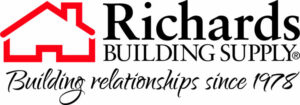Understanding Your Audience
As an incredibly successful owner of a roofing and siding contracting company with an exceptionally high closing rate, I share my story and these tips with the singular intent that you will learn from them, apply them, and even make them better.
As a U.S. military veteran with a long line that has had someone from my family serve in every war and conflict since 1908, I sincerely appreciate those who’ve served. As a lifelong learner, I have immense respect for those who have gone before me and paved the path primarily through pain and suffering, so I found myself eager to sit with the “wisdom generation.”
Demonstrating a degree of patience I don’t naturally possess, I began to understand that target audience so well that if you needed a home service project and I was at your kitchen table, you were signing with me. No one else was even an option.
This is the result of having an intimate knowledge of my target audience; it shaped everything I did, from cultivating leads to obtaining referrals, presenting the results of my exterior inspection, uncovering my prospects’ pains and fears, and solving them.
To understand your audience I cannot overstate the importance of clearly defining your target audience so that it shapes your strategic sales initiatives and increases the probability of success.
Success in the dynamic professional contracting world hinges on a fundamental principle: knowing your audience. It’s not just a good idea; it’s the cornerstone of a sustainable, profit-producing, and thriving contracting business. Today, we’re examining the importance of understanding your Ideal Qualified Prospect (IQP) and how it can revolutionize your lead cultivation and in-home selling processes and ultimately create clients for life.
Understanding Your Ideal Qualified Prospect (IQP):
Contextual Awareness: Seek first to understand your prospects’ world (lives). Understand their neighborhoods, communities, and the broader market trends shaping their decisions.
Language and Culture: Every community has unique vernacular, social norms, and cultural nuances. Adapt your communication style and marketing strategies to resonate authentically with your audience.
Identifying Pain Points: Anticipate and address latent (hidden and unaware) and acute (obviously in need of change) problems your prospects may face with their homes. Positioning yourself as the solution provider is critical, whether it’s leaky roofs, drafty windows, or outdated siding.
Understanding Life Stage Challenges: Consider where your prospects are in their life journey. Are they new homeowners looking to invest in upgrades? Empty nesters seeking to downsize? Tailor your offerings to align with their current needs and aspirations.
Emotional Buying Drivers: Recognize the emotional triggers that influence purchasing decisions. Tapping into these motivations can drive engagement and loyalty, whether it’s the desire for security, comfort, or pride in homeownership.
Financial Considerations: Assess the likelihood of your prospects being open to financing options. Providing flexible payment plans or financing solutions can remove barriers to entry and make your services more accessible.
Adaptation to Technology: Embrace digital tools and platforms to streamline the sales process and enhance customer experience. Integrating technology, from virtual consultations to online project management tools, can set you apart from the competition.
Striving for Success:
Commitment to Excellence: Strive for excellence in every aspect of your business. From initial prospecting to post-installation follow-up, demonstrate a commitment to professionalism and quality craftsmanship.
Continuous Improvement: Stay abreast of industry trends, best practices, and emerging technologies. Investing in ongoing education and training can sharpen your skills and keep you ahead of the curve.
Customer-Centric Approach: Place the needs and satisfaction of your customers at the forefront of your operations. Build long-lasting relationships based on trust, transparency, and exceptional service.
Embrace Innovation: Embrace innovation and explore new opportunities for growth and expansion. Whether adopting sustainable building practices or diversifying your service offerings, be open to evolution and adaptation.
In conclusion, understanding your audience isn’t just a strategy; it’s a philosophy that underpins your entire company’s culture. It must be more than a philosophy; it must be applied practically every day and in every situation for its intended effect on your business. Mastering your Ideal Qualified Prospect allows you to succeed in a competitive market. So, embrace the challenge, cultivate empathy, and watch your business flourish.
Clint Klepp
Director of Sales and Marketing
My Digital Business Card



